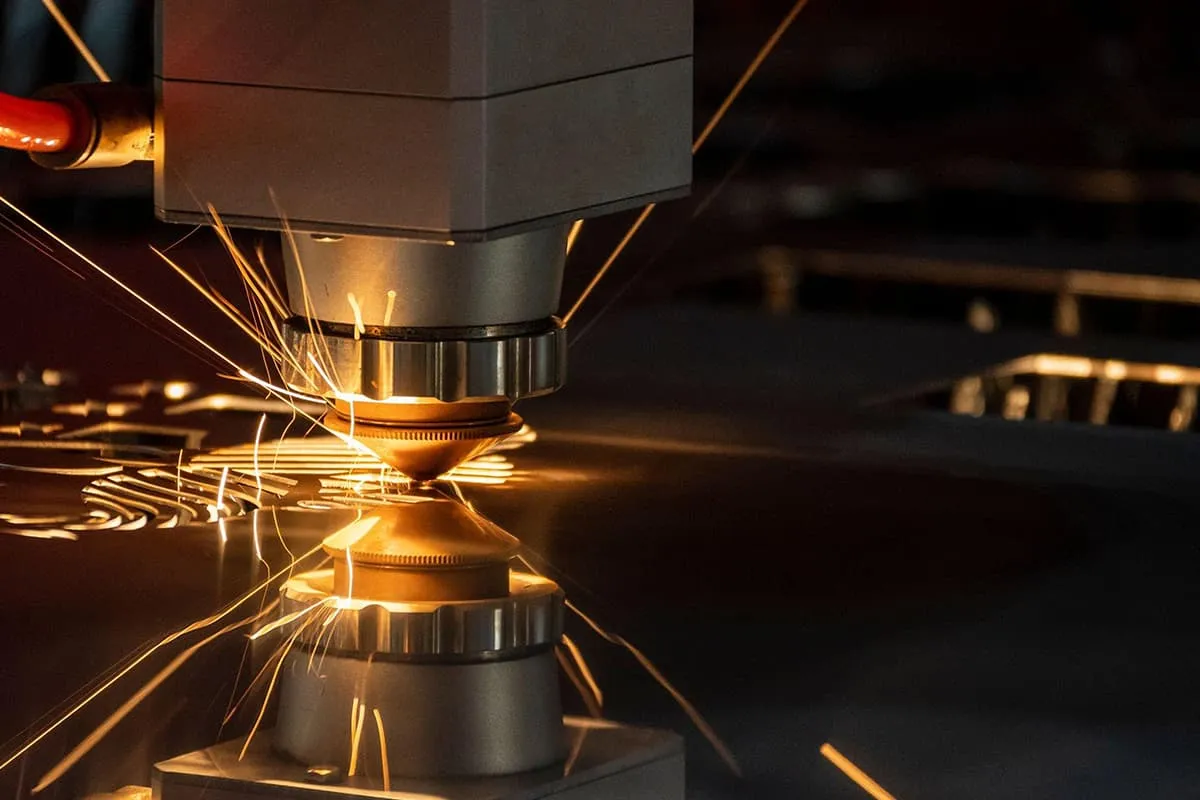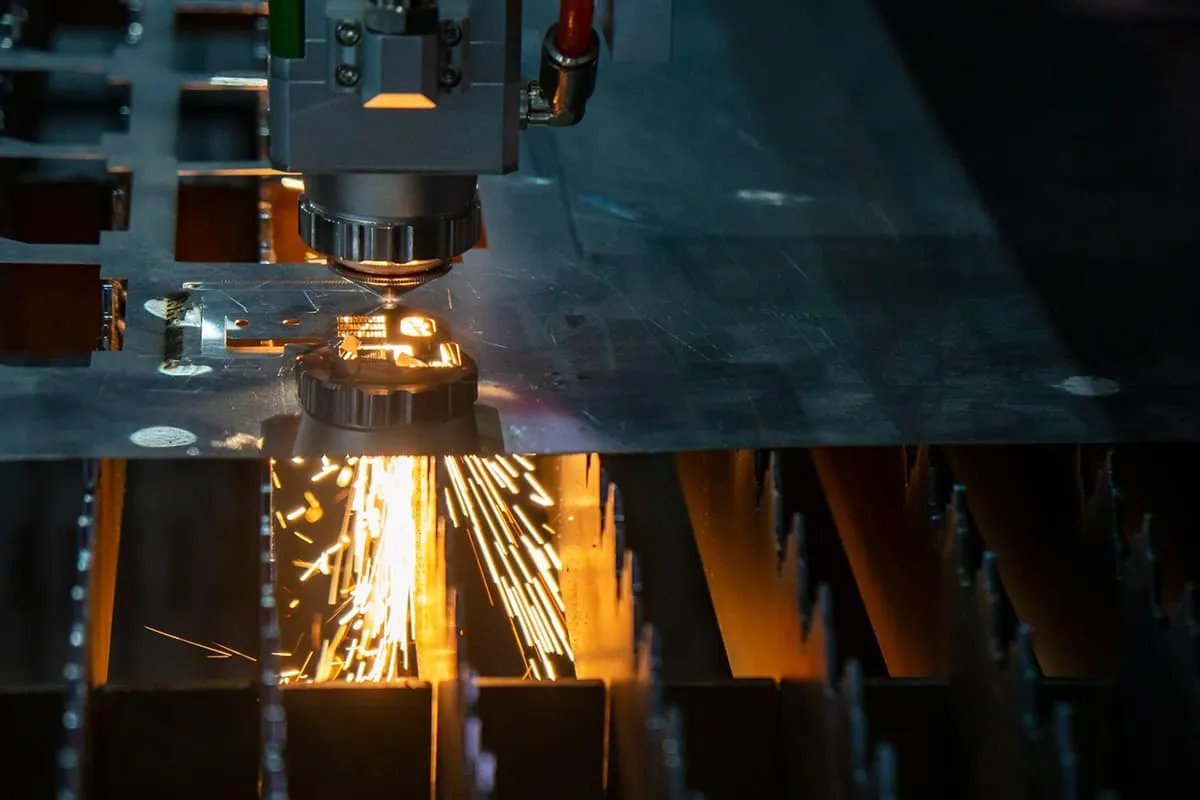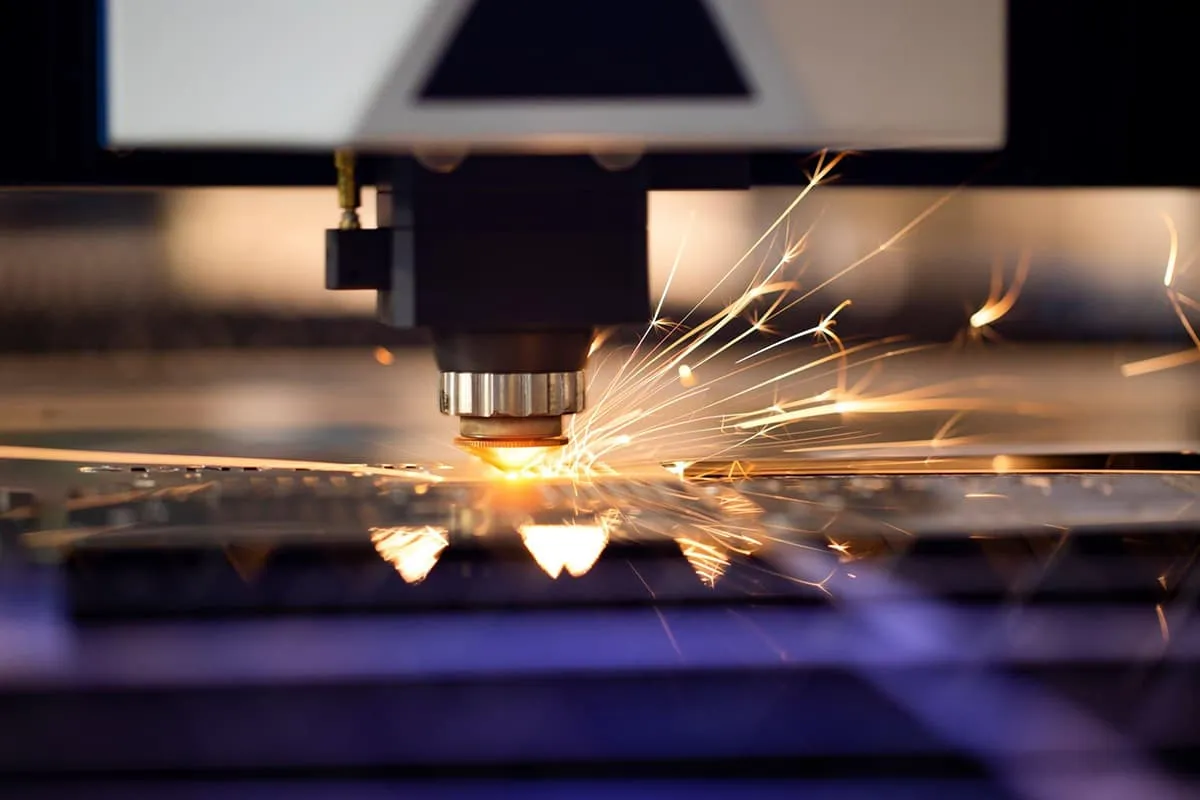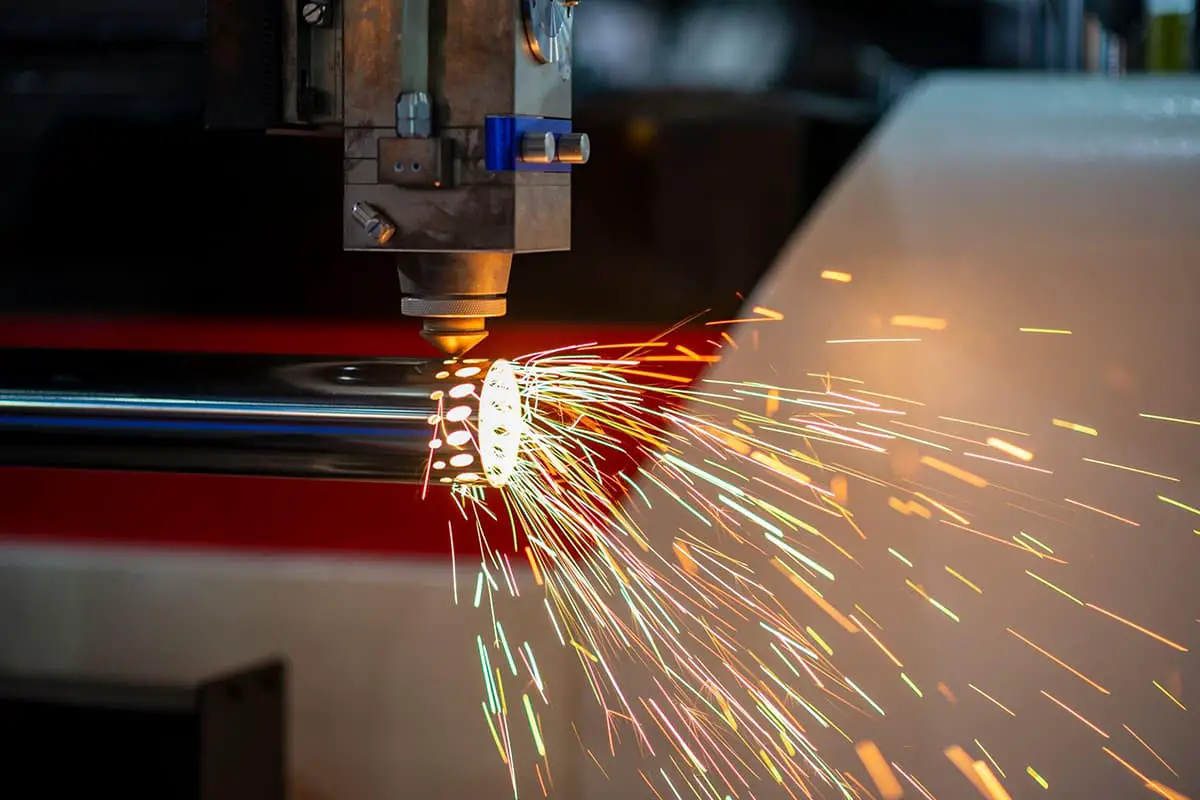
CNC laser cutting machines are advanced manufacturing tools that utilize laser technology as a precise cutting mechanism for processing workpieces. These machines have revolutionized metal fabrication by offering unparalleled accuracy, speed, and versatility in cutting operations.
The evolution of laser cutting technology is intrinsically linked to advancements in laser science and engineering. Over the decades, the industry has witnessed significant progress through three distinct generations of lasers:
- YAG (Yttrium Aluminum Garnet) Lasers: The first-generation solid-state lasers that pioneered industrial laser cutting.
- CO2 (Carbon Dioxide) Lasers: Second-generation gas lasers that dominated the market for many years due to their improved efficiency and cutting capabilities.
- Fiber Lasers: The current state-of-the-art technology, offering superior beam quality, energy efficiency, and maintenance benefits.
This article focuses on two predominant types of CNC laser cutting machines used in modern manufacturing:
- CO2 Numerical Control Laser Cutting Machines: These systems utilize a gas mixture (primarily CO2) to generate the laser beam. They excel in cutting non-metallic materials and thicker metal sheets.
- Fiber Laser Cutting Machines: Employing solid-state fiber laser technology, these cutting-edge systems offer exceptional performance in cutting thin to medium-thickness metals with remarkable speed and precision.
Laser cutting
Laser cutting is a state-of-the-art thermal cutting technology widely adopted in modern material processing. It utilizes a high-energy density laser beam as a precise “cutting tool” to sever materials with unparalleled accuracy.
When the high-power density laser beam irradiates the workpiece, it rapidly heats the targeted material to its ignition point or causes it to melt and ablate. Simultaneously, a high-velocity gas stream, coaxial with the laser beam, expels the molten material from the cutting zone, completing the cutting process.
CNC laser cutting machines offer numerous advantages, including precision manufacturing, complex shape processing, flexible cutting paths, single-pass forming, high-speed operation, and exceptional efficiency. These capabilities have revolutionized industrial production, solving many challenges that conventional cutting methods could not address.
The versatility of laser cutting allows it to process a wide range of metals and non-metallic materials. Its applications span various industries:
- Electrical manufacturing: Sheet metal fabrication for switch cabinets
- Transport machinery: Manufacturing of vehicles and material handling equipment
- Petrochemical: Cutting of oil screen pipes
- Automotive: Complex body panel cutting, including 2D and 3D applications
- Construction machinery: Processing of structural components
- Medical devices: Precision cutting meeting stringent safety and surface finish requirements
- Decoration: Custom cutting for architectural elements and signage
- Packaging: Production of diverse box shapes and sizes
A typical laser cutting machine comprises several key components:
Hardware:
- Rigid bed and beam structure
- Precision worktable
- High-power laser source
- Advanced cutting head
- Voltage stabilizer
- Efficient cooling system
- Electric control cabinet
- Gas supply system (oxygen, nitrogen, air)
Integrated systems:
- Electrical control system
- Mechanical drive system
- Gas delivery system
- Precision optical system
- Hydraulic system (where applicable)
- Lubrication system
- Cooling system
This integration of mechanical, optical, electrical, pneumatic, and fluidic systems results in a highly sophisticated piece of automation equipment.
The manufacturing process for laser cutting machines involves various metalworking techniques, including precision bending, advanced welding processes, high-precision machining, and meticulous assembly.
For mechanical power transmission, these machines primarily employ gear and rack systems, often complemented by lead screws and synchronous belts. The preference for gear-rack transmission stems from its instantaneous accuracy, high load capacity, and superior efficiency, crucial for maintaining cutting precision under dynamic conditions.
CO2 CNC laser cutting machine

The CO2 CNC laser cutting machine developed and manufactured by our company is illustrated in Fig. 1.
The machine tool comprises a mechanical system that facilitates movement along the X, Y, and Z axes, and a workbench for positioning the workpieces to be processed. Common configurations include a single-table toothed plate workbench and a sprocket-driven exchange workbench for enhanced productivity.
The machine employs a gantry suspension structure, with the transmission system powered by high-lead ballscrews for precise motion control. The beam executes Y-axis movement along fixed rails, while the cutting head assembly performs X-axis movement along the beam. The cutting head itself is capable of vertical (Z-axis) motion relative to the workpiece, allowing for accurate focus adjustment and cutting of various material thicknesses.
At the heart of the laser cutting machine is the CO2 laser source, which generates the high-power beam essential for the cutting process. The emission principle of the CO2 laser is depicted in Fig. 2.
The laser medium consists of a carefully balanced mixture of carbon dioxide, nitrogen, and helium gases, contained within a resonant cavity. Laser generation is initiated by applying a high voltage of approximately 40,000 volts to excite the gas mixture. The laser beam is amplified as it circulates between the rear mirror, the refractor, and the partially transmissive front mirror, from which the coherent beam is ultimately emitted.
CO2 CNC laser cutting machines offer several advantages, including the ability to cut stainless steel with exceptionally smooth edge quality and the versatility to process non-metallic materials such as acrylic and organic glass. However, they do have limitations, including relatively low photoelectric conversion efficiency (typically 8-12%), high power consumption, and substantial maintenance costs. The optics are particularly susceptible to contamination from dust particles in the assist gas, leading to potential burn marks on the lenses and necessitating costly replacements.
As fiber laser technology continues to advance, offering higher efficiency, lower operating costs, and reduced maintenance requirements, CO2 lasers are gradually being phased out in many industrial applications. However, they remain relevant for specific materials and processes where their unique characteristics provide superior results.
Fiber laser cutting machine
The fiber laser cutting machine developed and produced by our company features a gantry structure, as illustrated in Fig. 2. This design ensures stability and precision during cutting operations.
The machine’s motion system utilizes a gear and rack mechanism for power transmission, offering robust and accurate positioning. The cross beam traverses along the X-axis on the bed, while the slide seat moves along the Y-axis on the cross beam. This dual-axis movement allows for precise planar positioning of the cutting head.
Mounted on the slide plate of the slide seat, the cutting head performs Z-axis movement via a lead screw or linear module. This three-axis configuration enables the machine to execute complex cutting patterns with high accuracy.

Fig. 2 Schematic diagram of emission principle of CO2 laser
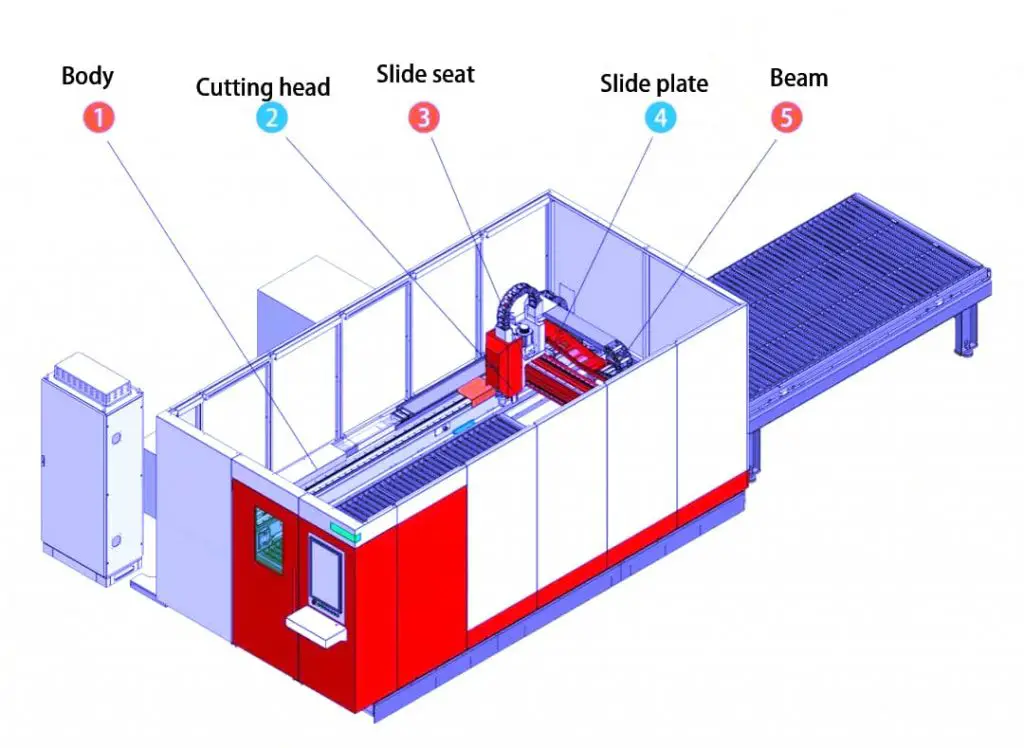
Fig. 3 Outline drawing of laser cutting machine
Fig. 4 demonstrates the light-emitting principle of the fiber laser. The laser system is modular, with each module representing a discrete power unit. The total output power is achieved by combining these modules, allowing for scalability and easier maintenance.
Within each module, pump sources generate light that is channeled through a coupler into the fiber laser medium. This design enables efficient energy transfer and laser generation. The use of rare earth elements as the gain medium contributes to the system’s efficiency and performance.

Fig. 4 Schematic diagram of optical fiber laser emission principle
Key advantages of our fiber laser cutting machine include:
- High photoelectric conversion efficiency of 25%, resulting in lower power consumption
- Utilization of rare earth elements as the gain medium, enhancing laser performance
- Lower equipment costs compared to traditional laser systems
However, it’s important to note that when cutting stainless steel, the cut section may appear rougher compared to CO2 laser cutting machines. Additionally, the cutting head assembly requires stringent sealing to maintain optimal performance and longevity.
To mitigate these challenges, we continuously refine our cutting parameters and implement advanced beam control techniques to improve cut quality across various materials.
Conclusion
Laser technology has undergone significant advancements, yet the industry still faces several technical challenges. Future developments are expected to focus on four key areas:
- High-speed, high-precision machine tools: As laser power increases, enabling cutting speeds of up to 80 m/min, maintaining high precision at these speeds becomes crucial. Machine tool manufacturers are prioritizing the development of enhanced structural designs and advanced control systems to overcome the limitations imposed by current accuracy and rigidity constraints.
- High-power-resistant cutting head structures: With the trend towards higher-power lasers, innovative cutting head designs capable of withstanding increased thermal loads and maintaining optimal beam quality are essential for maximizing cutting performance and longevity.
- Advanced piercing technology: Improvements in piercing techniques are necessary to reduce cycle times, minimize material waste, and enable efficient processing of thicker materials, particularly in high-strength alloys and composites.
- Intelligent automation systems: The integration of smart loading, unloading, sorting, and stacking systems will significantly enhance overall productivity and material handling efficiency. These systems will likely incorporate machine learning algorithms for adaptive process optimization and predictive maintenance.
The synergy between these advancements will drive the next generation of laser cutting systems, offering improved speed, precision, and versatility across a wider range of materials and applications. As the industry continues to evolve, collaboration between machine tool manufacturers, laser source developers, and end-users will be crucial in addressing these challenges and pushing the boundaries of laser cutting technology.


